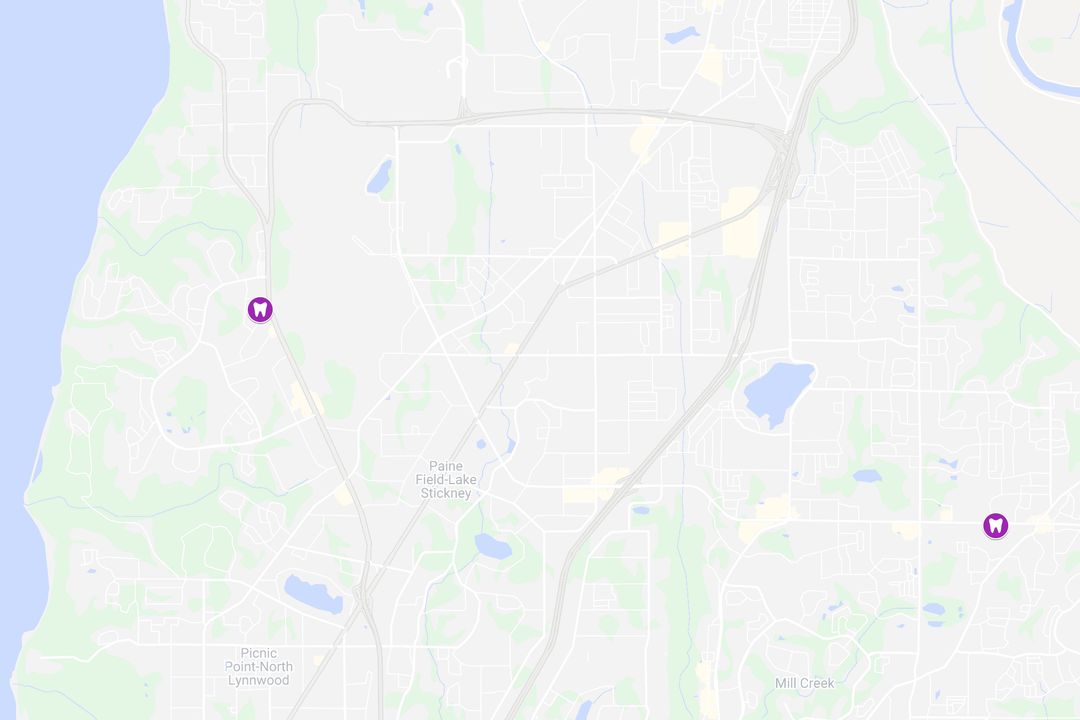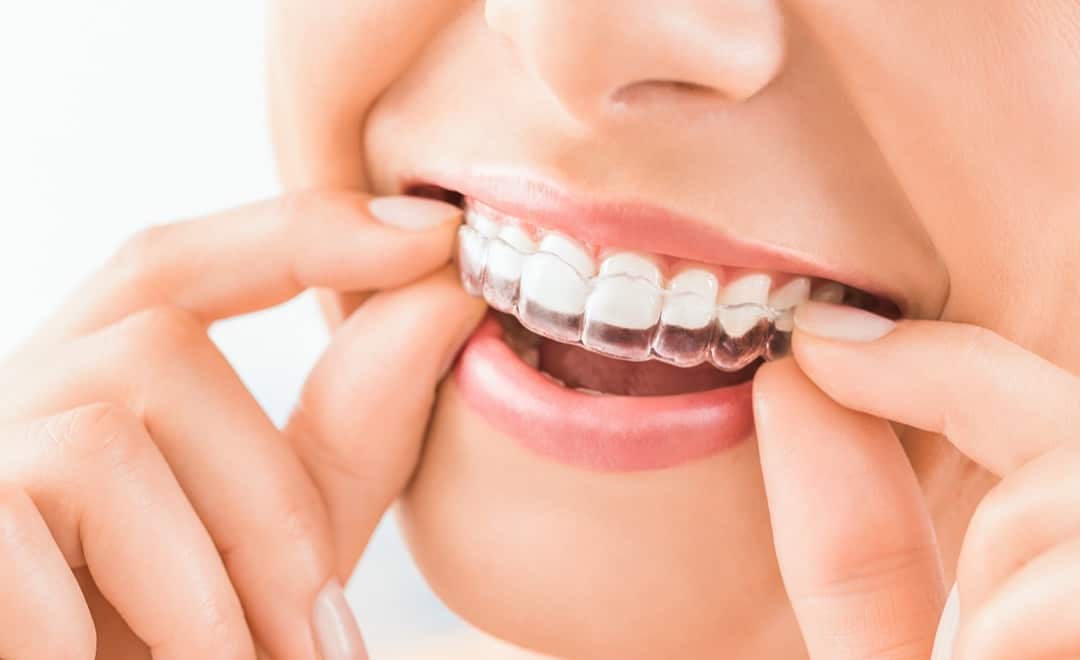Orthodontic Treatment Based On Age
Interceptive Care • Children
Early orthodontic care can help improve the growth and development of a child’s mouth and teeth, before issues worsen. When a child is actively growing, we can correct many orthodontic problems that may be more difficult to treat later.
Interceptive care is generally of shorter duration and is initiated anywhere from six to nine years of age, depending upon the type of problem. It can involve the skillful use of appliances, expanders, braces, and/or Invisalign® First.
Early orthodontic problems commonly include:
- Severe crowding/malalignment
- Habits like thumb/finger sucking
- Incisor crossbites and posterior arch crossbites
- Certain types of permanent tooth eruption problems
- Overbite that severely affects lip position and function
- Dental malalignment issues that adversely affect self-confidence


Adolescent Treatment • Teens
The time of adolescence is the most practical age to treat the majority of orthodontic problems. Though calendar age and tooth age can vary quite a lot, the most common age for loss of the last primary (baby) teeth is age 12. On average, girls are actively growing by this age, and boys are beginning the accelerated growth of adolescence.
Though crooked tooth problems can be treated similarly at about any age, the rapid growth of adolescence can be quite helpful in achieving one of the main goals of comprehensive treatment – bite correction.
Because of this combination of factors, adolescence will probably always be the most common age for the majority of our orthodontic patient.
Adult Orthodontics
Many adults who did not receive orthodontic treatment during childhood have simply lived with malaligned teeth or a dysfunctional bite most of their lives.
As people have become more health conscious and as orthodontic treatment has become both more accessible and affordable, many adults today value orthodontic bite correction.
Each year between 20 and 25 percent of Dr. Chad Carver’s patients are adults!

FAQs
Will Braces Hurt?
Orthodontic treatment has come a long way in recent years. New technology allows us to use lighter forces to move teeth over a much shorter amount of time.
You can expect braces to make your teeth sore for a few days after they are placed and after each adjustment. These adjustments will make you more conscious of your teeth, but they should not be too painful. This discomfort can be relieved with an over-the-counter pain reliever such as ibuprofen or acetaminophen (use as directed).
Today’s braces are smaller, more comfortable, and use technology that reduces the sensitivity. We use the latest in orthodontic technology and the highest quality of orthodontic materials in order to reduce discomfort and treatment time.
How long does Orthodontic Treatment take?
The answer will vary because no two cases are alike.
Shorter cases in younger patients can take 6-9 months, most intermediate cases can take 9-15 months, and comprehensive treatment lasts from 18-24 months. We finish many cases in less than 18 months, however, certain cases may take significantly longer.
What is Full/Comprehensive Orthodontic Treatment?
This refers to orthodontic treatment when all permanent teeth are erupted (all of your adult teeth have come in and you no longer have any baby teeth). It is more commonly used when a Phase I treatment was not performed.
What are Phase 1 and Phase 2 treatments?
Two-phase treatment is not a clever way for orthodontists to get you into two sets of braces, we promise.
Two-phase treatment simply means that there will be two separate parts to your orthodontic treatment. Though slightly more funds and time are involved, we assure you that this does not double the cost and treatment time for you. Though we try to avoid this when possible, in many cases, it is needed for the best end result.
Phase I treatment is aimed at intercepting a moderate or severe orthodontic problem early in order to reduce the severity or eliminate it. These problems most often include crossbites (of the front or back teeth) and crowding. Phase I treatment takes advantage of the early growth spurt and turns a difficult orthodontic problem into a more manageable one. This can also greatly help self-confidence in a young child who is being teased or embarrassed by the position of his or her teeth. This phase of treatment usually begins while the permanent front teeth are erupting (typically around the age of 8-9). We usually recommend this treatment when waiting could cause orthodontic problems or social problems to worsen.
Phase II treatment will occur after all permanent teeth have completed eruption (no more baby teeth are present). This serves to complete proper alignment which cannot be achieved with baby teeth present. In our office, this phase of treatment is significantly discounted due to the expense of Phase I treatment.
Does everyone need Phase 1 treatment?
Absolutely not! Only certain orthodontic problems require early intervention. In fact, most of our patients are able to wait until most if not all of their permanent teeth erupt to begin their orthodontic treatment.
If Phase 1 treatment is recommended, can I wait until my child is older?
This is not recommended. If your child needs Phase I treatment, this usually means that they have a difficult problem that requires attention now. If no orthodontic action is taken, treatment options become limited, more difficult, and the long-term stability may be compromised. In addition, it may lead to extractions, jaw surgery and increased costs.
Can you be too old for braces?
NEVER! While adult teeth sometimes move a little slower than children’s teeth, you are never too old to benefit from braces.
A large portion of Dr. Chad Carver’s practice is devoted to adult orthodontic care. In fact, he has several patients in their 50s, 60s, and even 70s!
What are extraction and non-extraction treatments?
Extraction treatment means that permanent teeth need to be removed. The two most common reasons are to relieve severe crowding and to allow the front teeth to be pulled back if a patient’s teeth and profile are too protrusive.
Non-extraction treatment is accomplished by expanding the arches in order to make room for all of the permanent teeth. It is less common to have permanent teeth extracted with today’s orthodontic techniques, but still may be an option in your treatment. Our first choice is to not extract permanent teeth, but our greater purpose is to give you the best result possible.
We will carefully evaluate your case and recommend the decision that gives you the smile you deserve!
Can I still get braces if I have missing teeth?
Absolutely! When teeth are missing, the teeth on each side of the space will tend to drift into the empty space creating a number of problems.
These open spaces between the teeth are unattractive and can detract from your smile. Additionally, tipping of the teeth can lead to problems with function and recession of the gum tissue. Orthodontic treatment will correct and prevent these problems and will also provide proper alignment for your dentist to replace the missing teeth.
How do I know if my child needs braces?
Even if their front teeth are straight, there may still be underlying bite issues that need to be determined by an orthodontist.
Conversely, there are some problems that look intimidating and complex which will resolve on their own. Our initial exam is complimentary and we would be more than happy to offer our honest recommendations.
What age should my child be seen by an orthodontist?
What are the early symptoms of orthodontic problems?
- Do you feel embarrassed when smiling or laughing?
- Do you have trouble chewing or biting your cheek?
- Is it difficult to clean between your teeth or do you frequently get food caught between your teeth?
If you answered yes to any of these questions, then orthodontic treatment can help.



